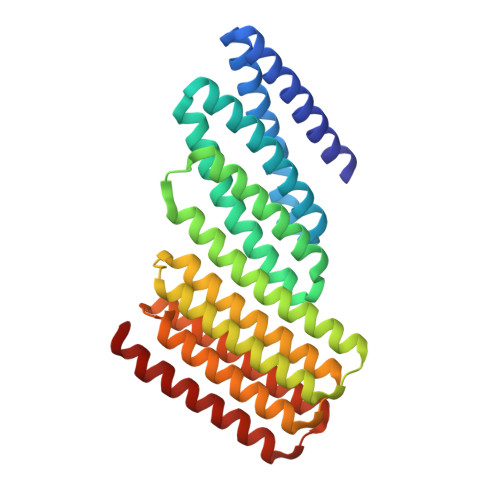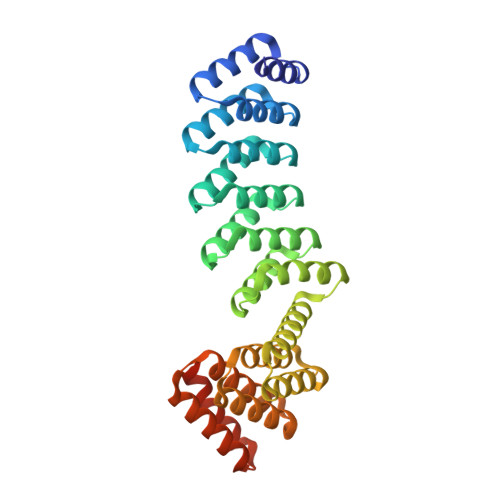Blueprinting extendable nanomaterials with standardized protein blocks.
Huddy, T.F., Hsia, Y., Kibler, R.D., Xu, J., Bethel, N., Nagarajan, D., Redler, R., Leung, P.J.Y., Weidle, C., Courbet, A., Yang, E.C., Bera, A.K., Coudray, N., Calise, S.J., Davila-Hernandez, F.A., Han, H.L., Carr, K.D., Li, Z., McHugh, R., Reggiano, G., Kang, A., Sankaran, B., Dickinson, M.S., Coventry, B., Brunette, T.J., Liu, Y., Dauparas, J., Borst, A.J., Ekiert, D., Kollman, J.M., Bhabha, G., Baker, D.(2024) Nature 627: 898-904
- PubMed: 38480887
- DOI: https://doi.org/10.1038/s41586-024-07188-4
- Primary Citation of Related Structures:
8G9J, 8G9K, 8GA6, 8GA7, 8GEL, 8TL7, 8V2D, 8V3B - PubMed Abstract:
A wooden house frame consists of many different lumber pieces, but because of the regularity of these building blocks, the structure can be designed using straightforward geometrical principles. The design of multicomponent protein assemblies, in comparison, has been much more complex, largely owing to the irregular shapes of protein structures 1 . Here we describe extendable linear, curved and angled protein building blocks, as well as inter-block interactions, that conform to specified geometric standards; assemblies designed using these blocks inherit their extendability and regular interaction surfaces, enabling them to be expanded or contracted by varying the number of modules, and reinforced with secondary struts. Using X-ray crystallography and electron microscopy, we validate nanomaterial designs ranging from simple polygonal and circular oligomers that can be concentrically nested, up to large polyhedral nanocages and unbounded straight 'train track' assemblies with reconfigurable sizes and geometries that can be readily blueprinted. Because of the complexity of protein structures and sequence-structure relationships, it has not previously been possible to build up large protein assemblies by deliberate placement of protein backbones onto a blank three-dimensional canvas; the simplicity and geometric regularity of our design platform now enables construction of protein nanomaterials according to 'back of an envelope' architectural blueprints.
Organizational Affiliation:
Department of Biochemistry, University of Washington, Seattle, WA, USA.















